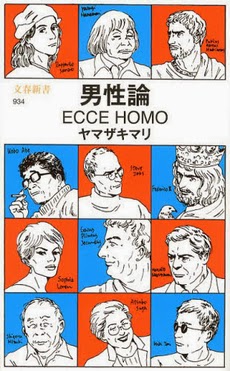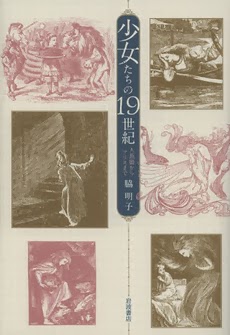A person’s life
has a distinct story. As the personal life belongs only to that person, at the
same time, we can see the deep in-rooted history and the broad world.
Listening to a
radio program Rajio Shinyabin
(Midnight Radio Letter) which introduced the topic of “Story about Moms”, I was
driven by desire to read the book “Hyakunen
Mae no Shoujo (A Girl’s Life of One Hundred Years)” (Kodansha) written by
Yumi Funabiki,
 The book is a
story about a girl named Tei Terasaki. The author is a freelance editor who used
to serve as an editor for “Taiyo”
magazine since its first edition. When she published the book, her mother Tei
had just turned 100 years old. Although her mother had never talked about her
personal history to her daughter before, she had burst out talking about her
personal story after reaching the age of 88. The author’s lively description of
her mother’s childhood life style in a village is a superb ethnological record
of a Japanese village of the time that was so common everywhere in Japan.
The book is a
story about a girl named Tei Terasaki. The author is a freelance editor who used
to serve as an editor for “Taiyo”
magazine since its first edition. When she published the book, her mother Tei
had just turned 100 years old. Although her mother had never talked about her
personal history to her daughter before, she had burst out talking about her
personal story after reaching the age of 88. The author’s lively description of
her mother’s childhood life style in a village is a superb ethnological record
of a Japanese village of the time that was so common everywhere in Japan.
Tei was a baby “born
on a day when lightening had struck” in a village of Joshu, now Gunma
prefecture, mother’s hometown where Tei was delivered. After merely a month,
Tei was sent back home from her mother’s parents’ house alone with a small package
of baby clothes and diapers, Tei’s grandmother on her father’s side was an
extraordinarily competent woman who was able to do all the household work perfectly
as well as farming and weaving. Being overwhelmed by her competence, Tei’s
mother refused to return to the in-law’s house, saying “I can’t possibly do
anything like her, however hard I may try.” Tei had never seen her mom ever
since. Her mother’s name was never mentioned in this book. Tei’s grandmother, Yasu,
ran around the village asking for breast milk to feed her granddaughter.
Several years
later, her father got remarried to a women who accepted his proposal under the
condition that Tei be sent out for adoption. Tei, at the age of five, was
ordered around to do things such as water drawing and kitchen work by her
foster parents who told her, “You are big enough to do these chores.” When her
father could no longer put up seeing her in such a situation, he brought her
home on the condition that she would leave home when she finished school. Tei had
returned at last to the care of her loving grandma she had missed so much.
After graduating
from Ashikaga Girls’ School, she left home for Tokyo alone at the age of 16.
She continued to study at night school while working and eventually graduated from
school, now called Shin
Watado Bunka Gakuen. She started working at the YWCA and got deeply
involved in Social Christian Movement, where she met a guy who would be her
husband.
While she raised five
children, the period of 100 years, marked by Meiji, Taisho, and Showa eras, have
passed. It is also quite intriguing to read the Terasaki Family’s sequel episodes.
Suddenly Tei’s
story rang a bell. Oh, I know someone like her! It’s a story of a girl’s life
of 60 years. The girl’s name, this time, is Midori, a cousin of mine on my
father’s side. Her personal life story is exactly the same as Tei’s, which
struck me.
Midori’s mother also
did not return to her in-laws’ house after spending fifty days with her baby
after giving birth at her hometown. Just like Yasu, Midori’s grandmother was a very
capable, strong woman, who could handle any type of work. Being unable to get
along with her mother-in-law, Midori’s mother left her behind and chose the
life of her own.
After graduating
from high school, Midori left her homeland, Kumamoto and got a job in Osaka.
Although she got married, she had tolerated with her husband’s domestic
violence for years until she was able to leave him and afterwards, her husband
passed away. As a single mother, she worked in Kumamoto to raise two boys doing
various jobs.
One day, out of
the blue, one of her sons engaged in ODA’s public construction project in Algeria
called her, saying, “Mom, I found a nice house on the Internet for you. What do
you think?”
While I was
visiting my hometown in Kumamoto, I was asked by her to help out on this matter. She said, “I just don’t know how to handle
it. Help me, please!”
Then I got
involved in the negotiations about the house on behalf of her. E-mails flew
back and forth among the real estate agent in Kumamoto, her son in Algeria, and
myself in Kyoto. And finally, as she wished, a deal of the old small house had
been done and I stood beside her while the contract was being signed.
After all those
days and years, she is now living a very peaceful life, watching over her
garden that is full of sunshine and currently filled with scent emitting from
the pink plum blossoms. I am quite
thankful to her for paying occasional visits to my mother who also lives alone
in Kumamoto whenever she has time from work.
People’s lives,
women’s lives, they are so diverse, But when they die, everyone is equal. It
all balances out in the end.
Seeing a sign of
ominous change in Japanese society nowadays, I feel I have to be ready for the coming
era. How many years are left until I become 100 years old? I do wish I would be able to weave “my own original story” without taking my
eyes off this transition of the time.
Original Article on the WAN Website: http://wan.or.jp/reading/?p=13014
Translated and Adapted by Yoko Hayami


